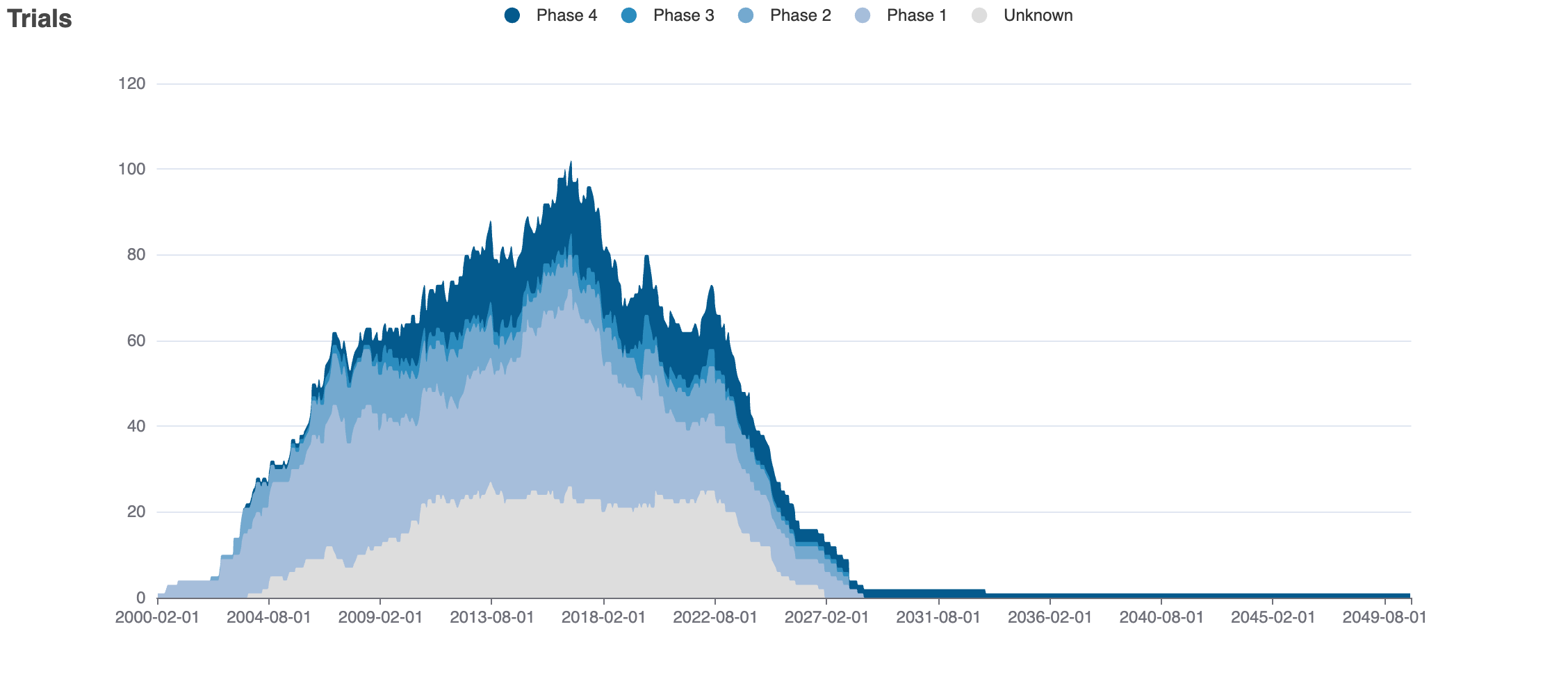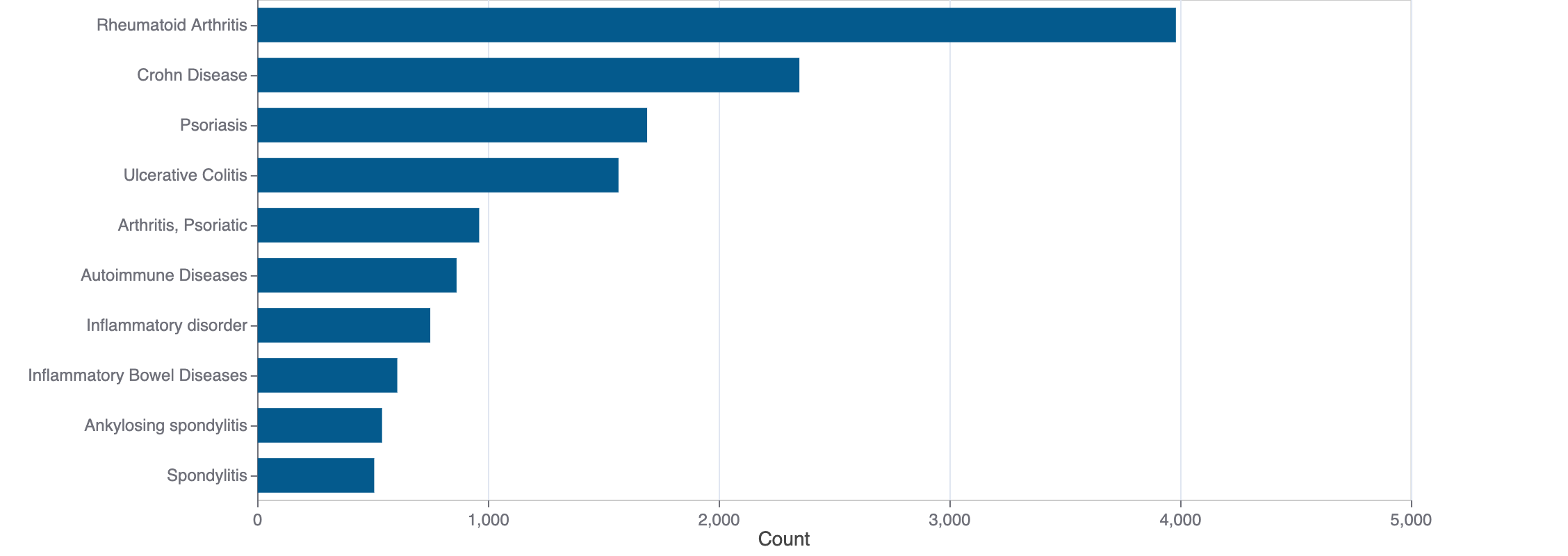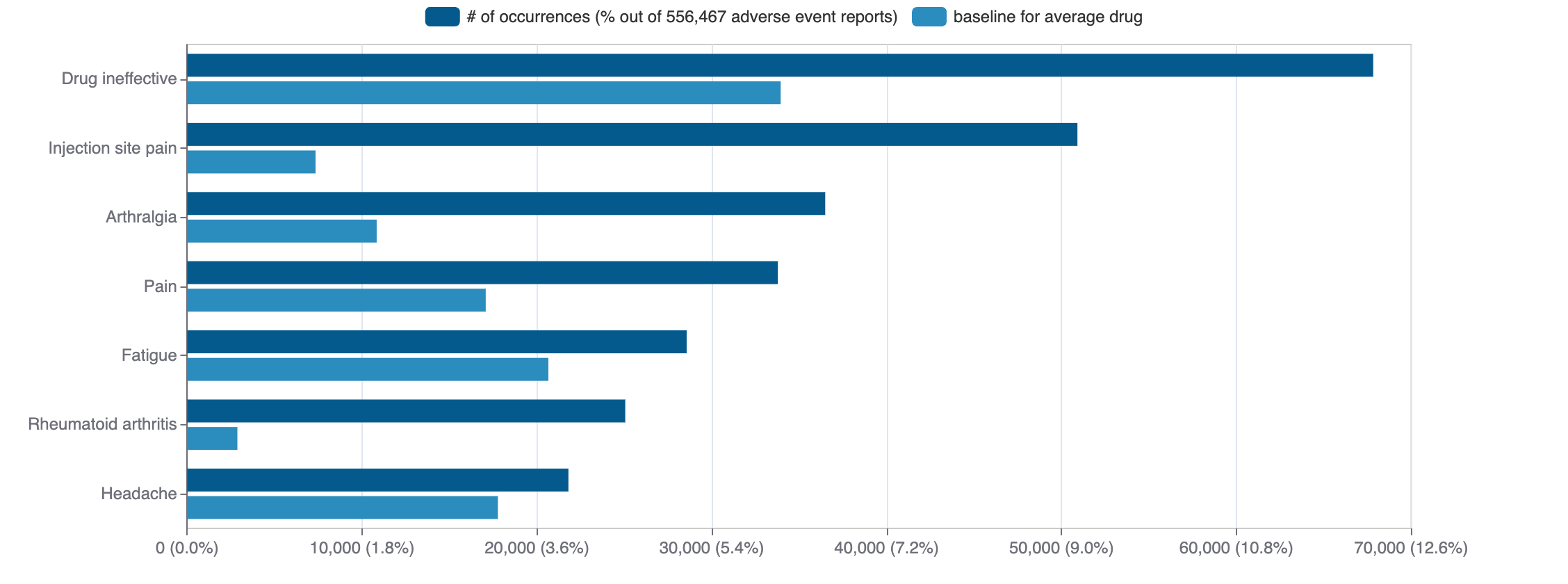Clofazimine
Lamprene (clofazimine) is a small molecule pharmaceutical. Clofazimine was first approved as Lamprene on 1986-12-15. It is used to treat borderline leprosy, lepromatous leprosy, mycobacterium avium-intracellulare infection, mycobacterium infections, and pyoderma gangrenosum in the USA.
Download report
Favorite
Events Timeline
Commercial
Clinical
Drug
Target
Variants
Financial
Trends
Safety
Events Timeline
5D
1M
3M
6M
YTD
1Y
2Y
5Y
Max
Events
FDA approval date
EMA approval date
Patent expiration date
Study first post date
Last update post date
Start date
Primary completion date
Completion date
Results first post date

Mock data
Subscribe for the real data
Subscribe for the real data
Commercial
Therapeutic Areas
Therapeutic Area | MeSH |
|---|---|
| infections | D007239 |
| skin and connective tissue diseases | D017437 |
Trade Name
FDA
EMA
No data
Labels
FDA
EMA
No data
Agency Specific
FDA
EMA
No data
Patent Expiration
No data
HCPCS
No data
Clinical
Clinical Trials
60 clinical trials
View more details

Mock data
Subscribe for the real data
Subscribe for the real data
Indications Phases 4
No data
Indications Phases 3
No data
Indications Phases 2
Indication | MeSH | Ontology | ICD-10 | Ph 1 | Ph 2 | Ph 3 | Ph 4 | Other | Total |
|---|---|---|---|---|---|---|---|---|---|
| Multidrug-resistant tuberculosis | D018088 | EFO_0007381 | — | — | 1 | — | — | — | 1 |
Indications Phases 1
No data
Indications Without Phase
Indication | MeSH | Ontology | ICD-10 | Ph 1 | Ph 2 | Ph 3 | Ph 4 | Other | Total |
|---|---|---|---|---|---|---|---|---|---|
| Infections | D007239 | EFO_0000544 | — | — | — | — | — | 1 | 1 |
Epidemiology
Epidemiological information for investigational and approved indications
View more details
Drug
General
| Drug common name | Clofazimine |
| INN | clofazimine |
| Description | Clofazimine is 3-Isopropylimino-3,5-dihydro-phenazine in which the hydrogen at position 5 is substituted substituted by a 4-chlorophenyl group, and that at position 2 is substituted by a (4-chlorophenyl)amino group. A dark red crystalline solid, clofazimine is an antimycobacterial and is one of the main drugs used for the treatment of multi-bacillary leprosy. However, it can cause red/brown discolouration of the skin, so other treatments are often preferred in light-skinned patients. It has a role as a leprostatic drug, a non-steroidal anti-inflammatory drug and a dye. It is a member of phenazines and a member of monochlorobenzenes. |
| Classification | Small molecule |
| Drug class | — |
| Image (chem structure or protein) |  |
| Structure (InChI/SMILES or Protein Sequence) | CC(C)/N=c1\cc2n(-c3ccc(Cl)cc3)c3ccccc3nc-2cc1Nc1ccc(Cl)cc1 |
Identifiers
| PDB | — |
| CAS-ID | 2030-63-9 |
| RxCUI | — |
| ChEMBL ID | CHEMBL1292 |
| ChEBI ID | — |
| PubChem CID | 2794 |
| DrugBank | DB00845 |
| UNII ID | D959AE5USF (ChemIDplus, GSRS) |
Target
No data
Variants
No data
Financial
No data
Trends
PubMed Central
Top Terms for Disease or Syndrome:

Mock data
Subscribe for the real data
Subscribe for the real data
Additional graphs summarizing 6,767 documents
View more details
Safety
Black-box Warning
No Black-box warning
Adverse Events
Top Adverse Reactions

Mock data
Subscribe for the real data
Subscribe for the real data
4,633 adverse events reported
View more details
© 2020-2025 Collaborative Drug Discovery Inc. (CDD) | Terms of Use